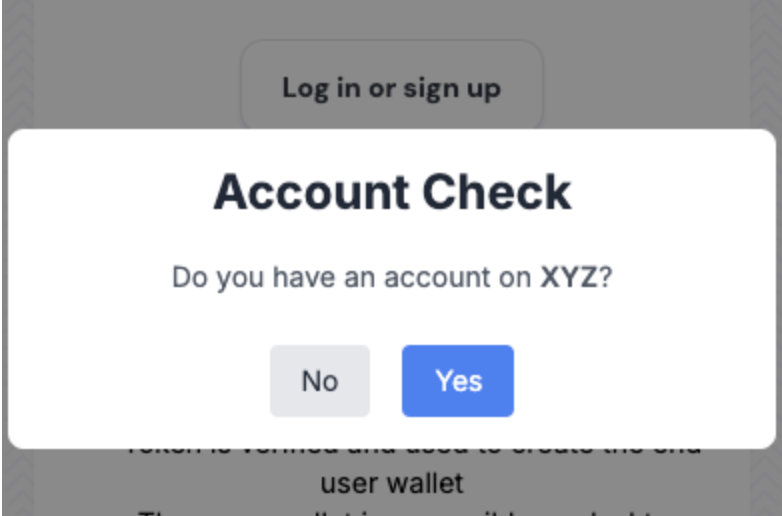Introduction
Seamless Telegram Login with Telegram Web Apps improves user experience by enabling quick access directly within Telegram Messenger. Users can launch a mini app and get automatically logged in.Live Demo
🤖 Open Dynamic Mini App Bot in TelegramIntegration guide
To begin, you can clone the provided Mini App example and repository as a foundation for your project.Step-by-Step Instructions
-
Create an Account on Dynamic
- If you haven’t done so already, sign up for an account on Dynamic and take note of your Environment ID.
-
Clone the Repository and Deploy
- Clone Mini App example and repository to your local machine.
- Follow steps in the README
- Deploy the application online. With Next.js, you can deploy a web app within minutes. Follow the deployment instructions here.
- Create a Telegram App and Bot
-
Configure Settings in Dynamic Dashboard
- In your Dynamic dashboard, complete the following steps:
- Add your web app URL as authorized CORS origin.
- Enable Telegram Social Login and configure it with your Bot Name and Secret Token.
- In your Dynamic dashboard, complete the following steps:
-
Update Bot Configuration
- Use the Bot
TOKENfrom Telegram and set your web app URL as theLOGIN_URLinscripts/bot.tsor add them as environment variables.
- Use the Bot
-
Run the Telegram Bot
- Run the Telegram bot using the following command:
- Run the Telegram bot using the following command:
-
Start the Bot in Telegram
- Open Telegram, go to your newly created bot, and type
/start.
- Open Telegram, go to your newly created bot, and type
Success!
You should now have Dynamic’s Seamless Telegram Login fully functional in your Mini App. 🎉 If you have any questions or need help with the integration, feel free to reach out to us in Slack.Telegram Authentication Check for Existing Users
This feature avoids accidental duplicate account creation by ensuring that users with existing accounts don’t create unnecessary new ones if their account is not yet linked to Telegram. TheisAuthWithTelegram() function verifies whether the user is authenticated through Telegram.

Hook is available from SDK version 3.1.3
-
Import the necessary Telegram authentication functions:
-
Check if the user is authenticated via Telegram:
Use isAuthWithTelegram() to determine if the user is linked with Telegram.
-
Handle the modal splash response:
If the user has an account: Prompt developer’s login into the app without creating a new account.
If the user doesn’t have an account: Automatically create a new account and log the user in.
Providing the Telegram auth token to Dynamic
The Telegram Auto-Wallets feature allows you to authenticate your end user with Dynamic using a Telegram authentication token directly. There are currently two ways to provide this token to our SDK.- Pass the auth token as a query parameter when the mini app is launched.
telegramSignIn is called within your mini app, the token is grabbed from the URL query parameters and used to authenticate the user
- Pass the auth token directly into the
telegramSignInhook
telegramSignIn hook. This is useful if you are generating the Telegram auth token somewhere outside of Telegram
such as your backend.
FAQ
What do I need to do to ensure that Telegram Auto-Wallets is working correctly?
- CORS Origin Setup: Ensure that your CORS Origin is correctly configured to include your domain(s). Go to Dashboard > Security > CORS and verify that your domain(s) are listed.
- Telegram Social Provider: Verify that the Telegram Social Provider is enabled and configured with the correct Bot details. Navigate to Dashboard > Log In & User Profile > Telegram and confirm that it is turned on, with the BotName and Bot Token entered correctly.
- Session keys: Please reach out to us in Slack to request access.
- Email Profile Information Requirement: Make sure that the option to require profile information for email login is turned off. Go to Dashboard > Log In & User Profile > Email ⚙️ and confirm that Profile Information required is off.
-
Bot Code & Telegram Mini Web App:
Clone the provided Mini App example and repository as a foundation for your project.
Double-check that the Telegram bot code and the Telegram Mini Web App are functioning without any errors.
Check the environment variable are loaded correctly
LOGIN_URLandTOKEN. Ensure that the logic for seamless login and user verification is working as expected, both server-side and on the front end. - SDK and Package Versions: Verify that the SDK and any packages you’re using are up to date. Hook is available from SDK version 3.1.3